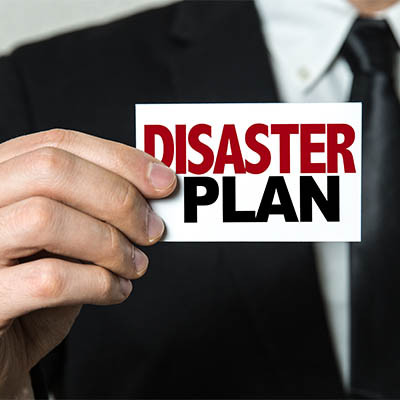Directive Blogs
What Are You Going to Do When Disaster Strikes?
When we are talking about the continuity of your business, we typically use the colloquialism “disaster” for just about anything that could put the brakes on your business’ ability to do business. But what happens when that “disaster” is an actual disaster and threatens to derail your business completely? Today, we take a look at some disaster preparedness tips that can quite literally save your business from ruin.
Tip #1 - Plan Emergency Guidelines
Your business can be humming along as usual when a disaster strikes. This could be weather-related, a structure fire, a malware attack, or any other circumstance that threatens to take down your business for good. For these circumstances, you absolutely need a plan. Emergency preparedness is a difficult endeavor since there are many different scenarios where you would need to enact it, and many of them require different considerations. That’s without mentioning that every business has unique elements that need consideration.
The first thing that needs to be accomplished—even before you begin planning how to combat each type of emergency—is to ensure that you have the resources in place that will work regardless of the type of disaster. This includes thorough instructions for your team, including assigning roles individual people will need to fulfill in the case of a disaster. Having proactive strategies in place to combat large-scale business interruptions may be difficult, time-consuming, and oftentimes costly, but you will be glad you have them if disaster hits your business.
Tip #2 - 3-2-1
You will also want to have a comprehensive data backup and recovery strategy in place since most small businesses won’t be able to have the type of contingency plan that would involve moving to a new location immediately. For many small businesses, having access to their applications and data is a crucial part of being able to mitigate downtime.
At Directive, we suggest following the 3-2-1 approach to data redundancy. That is having three copies of your data, two of those copies stored onsite, with one stored offsite. This allows for fast recovery in the event that the “disaster” isn’t something that takes out your ability to do business at your brick and mortar location, but also protects against tragic events that render your place of business offline, without power, or worse.
Tip #3 - You Have to Test
Nothing could be worse than taking all the time, effort, and expense to plan for a disaster, assign roles, and train your people in their assigned disaster recovery roles only to find out that there is a critical failure somewhere in your disaster recovery strategy. It’s like building levees to keep the water out only to find out when the time comes that they weren’t maintained properly.
To keep this from happening, you need to know, not think, but know that your disaster recovery strategy will work if it is called upon. Part of risk management—and this whole plan is nothing more than managing risk—is to ensure that you are able to weather the figurative (or literal) storm and come out okay on the other side. To accomplish this, you need to test your disaster recovery system, your guidelines, and your overall strategy to ensure that it will work if the time comes.
If you would like to talk to an IT professional about disaster recovery and what your business should be doing to ensure that when a disaster strikes your business that you will be able to reliably continue operations, reach out to our knowledgeable staff at 607-433-2200 today.



Comments